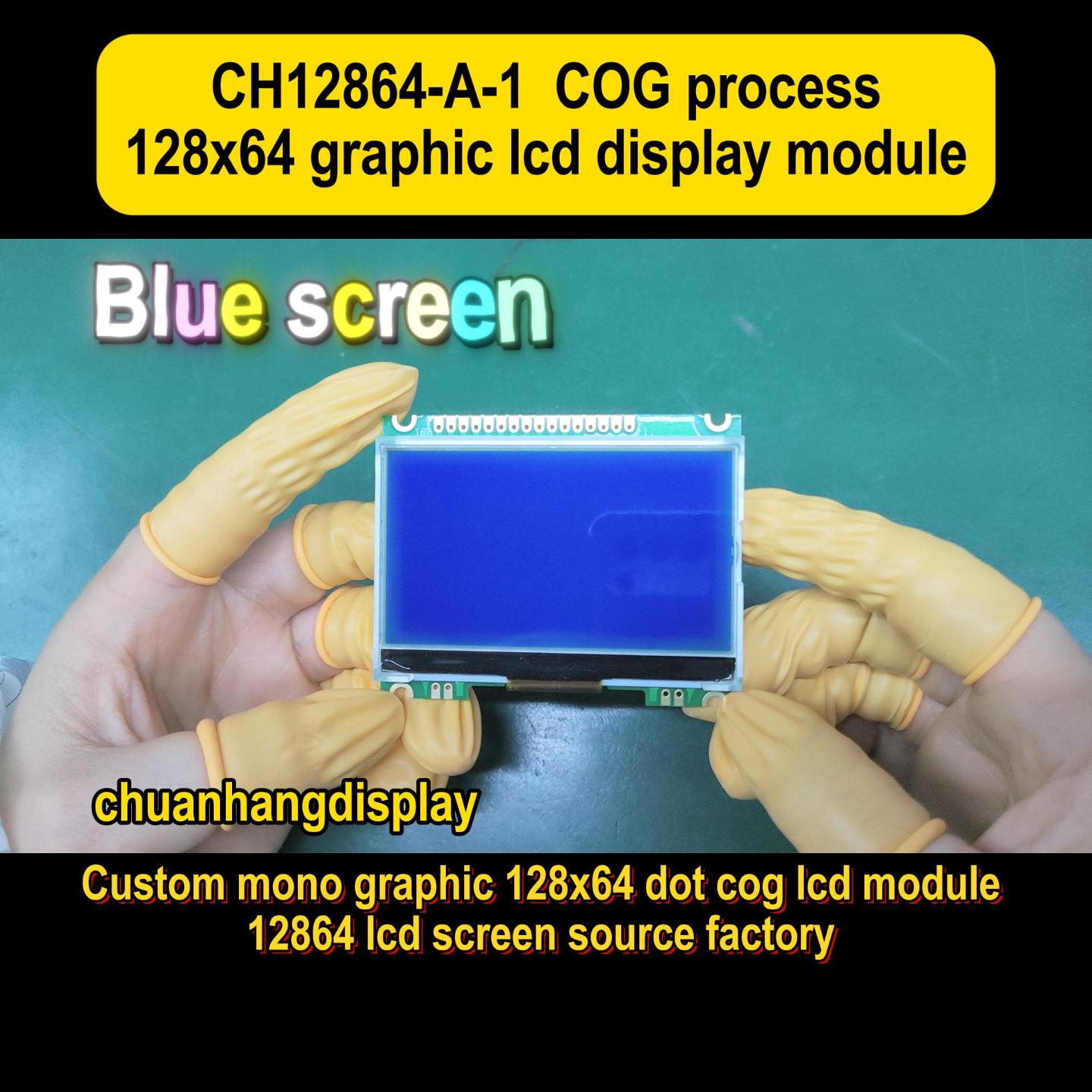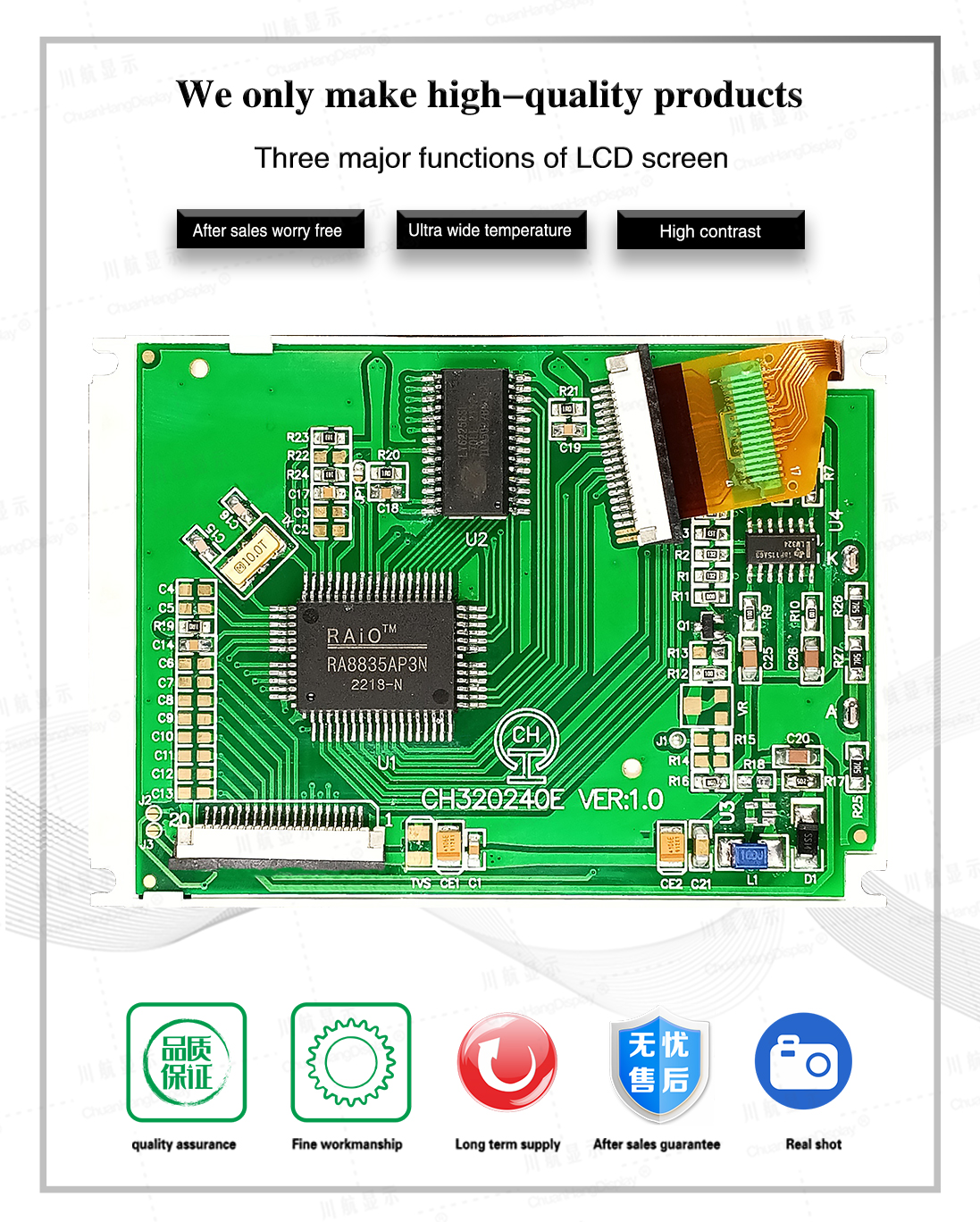When you look at your smartphone, computer monitor, or television, have you ever wondered how that vibrant display is created? The answer lies within an LCD factory, a hub of innovation and precision where liquid crystal displays (LCDs) are manufactured. These facilities are more than just production sites; they are the backbone of modern technology, driving everything from consumer electronics to industrial applications. In this article, we’ll take a closer look at the inner workings of an LCD factory, covering key aspects that make these places essential to our digital world. From the initial stages of raw material handling to the final quality checks, we’ll explore what goes into making the screens we rely on daily. Plus, we’ll highlight how brands like Chuanhang Display contribute to this dynamic industry. By the end, you’ll have a comprehensive understanding of why an LCD factory is crucial in today’s tech-driven era.

An LCD factory is a specialized industrial facility dedicated to the production of liquid crystal displays. These displays are used in a wide range of devices, including TVs, laptops, smartphones, and automotive screens. At its core, an LCD factory combines advanced machinery, skilled labor, and rigorous processes to transform basic materials into functional screens. The term "LCD factory" often brings to mind large, automated plants where cleanliness and precision are paramount. This is because even minor contaminants can ruin the delicate components of an LCD. In such a factory, the environment is controlled to minimize dust and static, ensuring that each panel meets high standards. The role of an LCD factory extends beyond mere assembly; it involves research, development, and continuous improvement to keep up with evolving technology. For instance, many LCD factories, including those partnered with Chuanhang Display, focus on enhancing resolution, energy efficiency, and durability. Understanding the basics of an LCD factory helps appreciate the complexity behind every screen you use.
The manufacturing process in an LCD factory is a multi-stage journey that requires meticulous attention to detail. It typically begins with the preparation of glass substrates, which serve as the base for the display. In an LCD factory, these substrates are cleaned and coated with layers of conductive materials to form electrodes. Next, liquid crystal material is injected between two glass panels, and this assembly is sealed to create the core of the display. One critical phase in any LCD factory is the alignment of the liquid crystals, which determines how light passes through to produce images. This is followed by the integration of color filters and backlighting systems, which add vibrancy and brightness to the screen. Throughout this process, an LCD factory relies on automation and robotics to handle delicate components, reducing human error and increasing efficiency. For example, in a state-of-the-art LCD factory like those operated by Chuanhang Display, computer-controlled systems ensure precise alignment and bonding. The entire process, from start to finish, can take several days, emphasizing the need for a well-organized LCD factory to maintain productivity and quality. By breaking down these steps, it’s clear that an LCD factory is a symphony of engineering and chemistry, all aimed at delivering flawless displays.
Innovation is the lifeblood of any successful LCD factory, driving improvements in speed, quality, and sustainability. Modern LCD factories employ cutting-edge technologies such as photolithography, which uses light to etch intricate patterns onto glass substrates. This technique allows for higher resolutions and thinner displays, meeting the demands of today’s market. Another key technology in an LCD factory is the use of advanced bonding methods, which ensure that layers adhere securely without bubbles or defects. Additionally, many LCD factories are integrating Internet of Things (IoT) devices to monitor production in real-time, optimizing energy use and reducing waste. For instance, Chuanhang Display has been at the forefront of incorporating AI-driven analytics in their LCD factory, predicting maintenance needs and minimizing downtime. Environmental innovations are also gaining traction; an LCD factory might use water recycling systems or low-energy lighting to reduce its carbon footprint. The adoption of these technologies not only enhances the output of an LCD factory but also positions it as a leader in the competitive display industry. As consumer expectations grow, the role of innovation in an LCD factory becomes even more critical, pushing boundaries to create smarter, more efficient screens.

Quality control is a non-negotiable aspect of any reputable LCD factory, ensuring that every display meets strict performance and safety standards. In an LCD factory, this involves multiple layers of inspection, starting with raw material checks to verify purity and consistency. During production, automated vision systems scan for defects like dead pixels, color shifts, or uneven backlighting. These systems can detect issues that are invisible to the human eye, allowing for immediate corrections. After assembly, each unit undergoes functional testing in the LCD factory, where it’s subjected to various conditions such as temperature extremes and mechanical stress to simulate real-world use. This rigorous approach helps an LCD factory maintain reliability and customer satisfaction. Brands like Chuanhang Display emphasize quality by implementing statistical process control in their LCD factory, which uses data to identify trends and prevent defects before they occur. Moreover, an LCD factory often adheres to international standards like ISO 9001, which certifies consistent quality management. By prioritizing quality control, an LCD factory not only reduces returns and costs but also builds trust with consumers and partners alike.
Brands like Chuanhang Display play a pivotal role in shaping the LCD factory ecosystem, bringing expertise and innovation to the table. As a recognized name in the display industry, Chuanhang Display operates its own LCD factory facilities that focus on producing high-quality, custom screens for various applications. Their involvement goes beyond manufacturing; they invest in research and development to push the limits of what an LCD factory can achieve. For example, Chuanhang Display has pioneered eco-friendly practices in their LCD factory, such as using lead-free materials and reducing hazardous waste. This not only benefits the environment but also sets a benchmark for other players. In an LCD factory run by Chuanhang Display, collaboration with clients is key, allowing for tailored solutions in sectors like healthcare, gaming, and automotive. By leveraging their experience, Chuanhang Display helps an LCD factory adapt to market trends, such as the shift toward flexible and curved displays. Their commitment to excellence ensures that the term "LCD factory" is synonymous with reliability and innovation, making them a trusted partner in the global supply chain.
The environmental impact of an LCD factory is a growing concern, but many facilities are taking steps to become more sustainable. Traditionally, an LCD factory consumes significant amounts of water, energy, and chemicals, leading to potential pollution and resource depletion. However, modern LCD factories are adopting greener practices, such as installing solar panels, implementing closed-loop water systems, and using non-toxic solvents. For instance, in an LCD factory operated by Chuanhang Display, energy-efficient machinery and waste reduction programs have cut carbon emissions substantially. Recycling is another focus; an LCD factory often recycles glass, metals, and plastics from production scraps. Additionally, the push for longer-lasting products reduces electronic waste, aligning with circular economy principles. By addressing these issues, an LCD factory not only complies with regulations but also appeals to eco-conscious consumers. The journey toward sustainability in an LCD factory is ongoing, with innovations like biodegradable materials and carbon-neutral goals gaining traction. This evolution shows that an LCD factory can be both productive and environmentally responsible.
The future of the LCD factory is shaped by emerging technologies and changing consumer demands. One major trend is the integration of OLED and mini-LED technologies within an LCD factory, offering better contrast and energy efficiency. This hybrid approach allows an LCD factory to stay relevant in a market increasingly dominated by advanced displays. Another trend is the move toward smart manufacturing, where an LCD factory uses big data and machine learning to optimize production lines. This could lead to "lights-out" factories that operate autonomously, reducing labor costs and errors. In terms of design, an LCD factory is exploring flexible and foldable displays, requiring new materials and processes. Brands like Chuanhang Display are investing in these areas, ensuring their LCD factory remains competitive. Geographically, we might see more LCD factories in regions with lower environmental regulations, but this could shift as global standards tighten. Overall, the evolution of an LCD factory points toward greater automation, customization, and sustainability, ensuring it continues to be a cornerstone of the tech industry.
In summary, an LCD factory is much more than a production site; it’s a complex ecosystem where science, technology, and human skill converge to create the displays we depend on. From the intricate manufacturing processes and cutting-edge innovations to stringent quality controls and environmental considerations, every aspect of an LCD factory plays a vital role. Brands like Chuanhang Display exemplify how dedication to excellence can elevate the capabilities of an LCD factory, driving progress and setting new standards. As technology advances, the LCD factory will continue to evolve, adapting to new challenges and opportunities. Whether you’re a tech enthusiast or a industry professional, understanding the inner workings of an LCD factory offers valuable insights into the future of digital displays. We hope this deep dive has shed light on the fascinating world behind your screens.
Q1: What is the primary function of an LCD factory?
A1: The primary function of an LCD factory is to manufacture liquid crystal displays (LCDs) for various electronic devices, such as TVs, monitors, and smartphones. In an LCD factory, processes include substrate preparation, liquid crystal injection, and quality testing to produce high-quality screens efficiently.
Q2: How does an LCD factory ensure the quality of its products?
A2: An LCD factory ensures product quality through rigorous testing protocols, including automated inspections for defects, environmental stress tests, and adherence to international standards. For example, in an LCD factory like Chuanhang Display’s, advanced vision systems and data analytics are used to monitor every stage of production.
Q3: What environmental challenges does an LCD factory face?
A3: An LCD factory faces environmental challenges such as high energy consumption, water usage, and chemical waste. However, many modern LCD factories are addressing these by implementing sustainable practices like recycling programs, energy-efficient technologies, and reducing hazardous materials.
Q4: How is technology changing the operations of an LCD factory?
A4: Technology is transforming an LCD factory through automation, IoT integration, and AI-driven analytics. These innovations improve precision, reduce downtime, and enable customization. In an LCD factory, this leads to higher productivity and the ability to produce advanced displays like flexible or high-resolution screens.
Q5: Why are brands like Chuanhang Display important in the LCD factory industry?
A5: Brands like Chuanhang Display are important because they bring expertise, innovation, and quality standards to the LCD factory sector. They invest in R&D, adopt eco-friendly practices, and offer customized solutions, helping to advance the capabilities and reputation of an LCD factory globally.